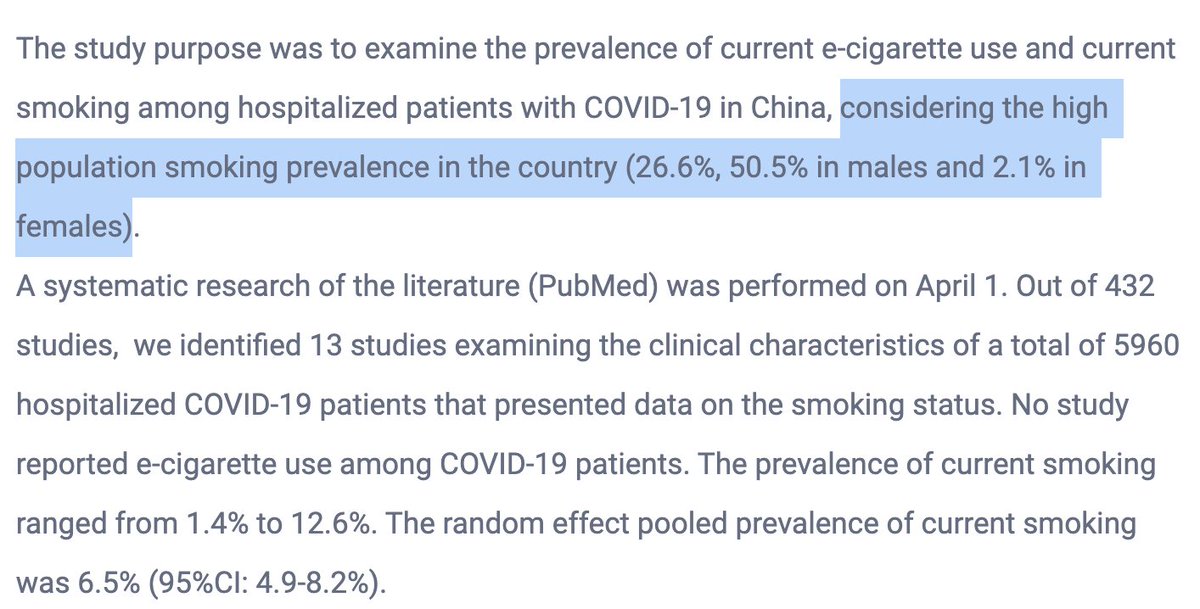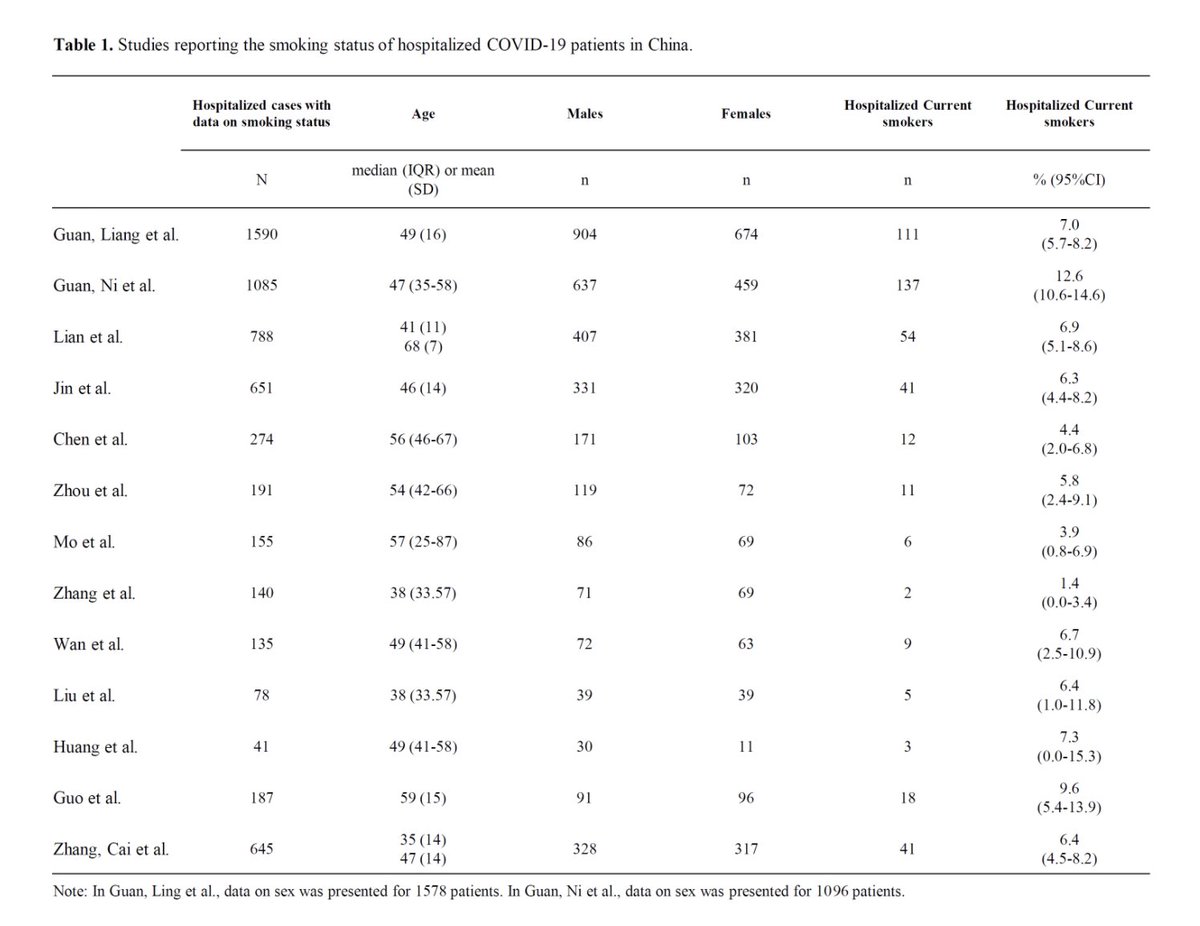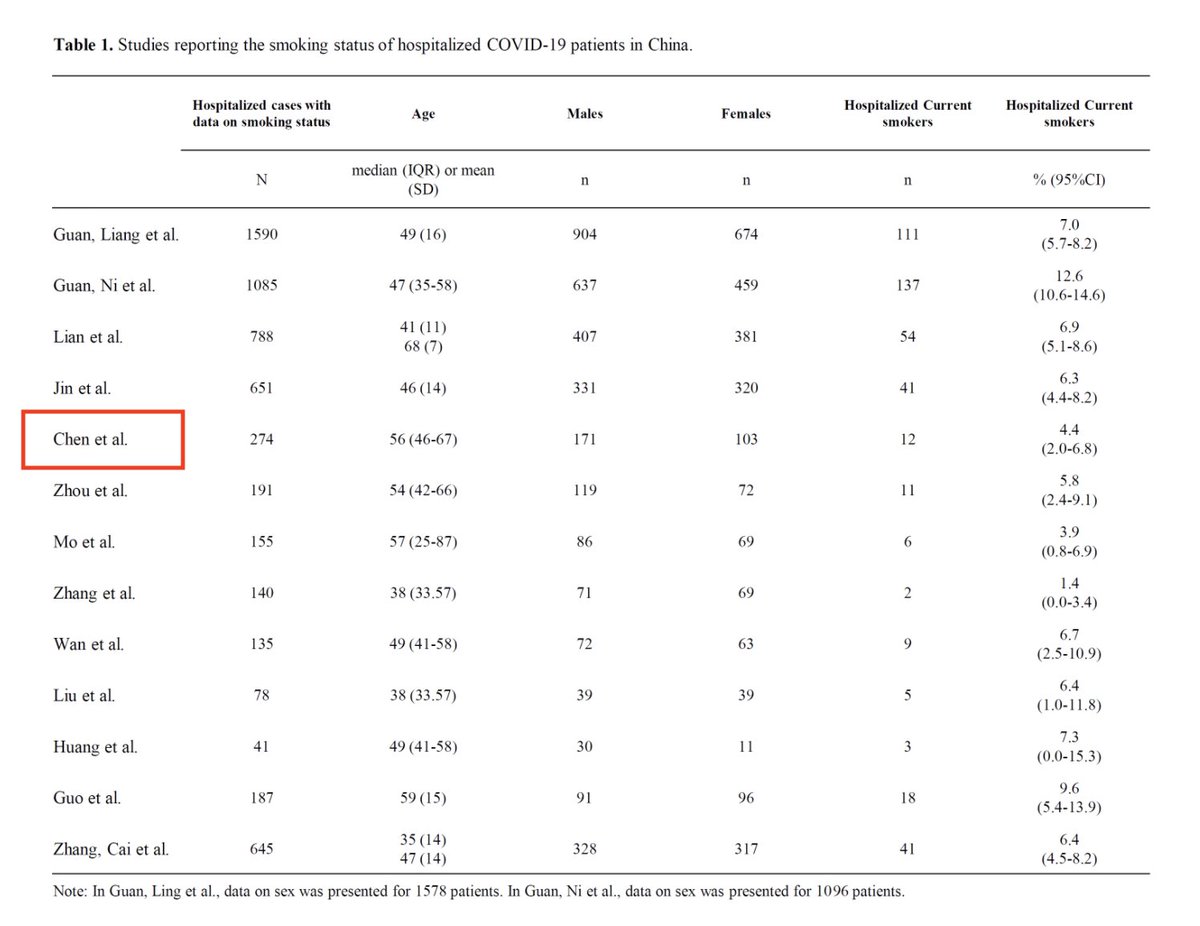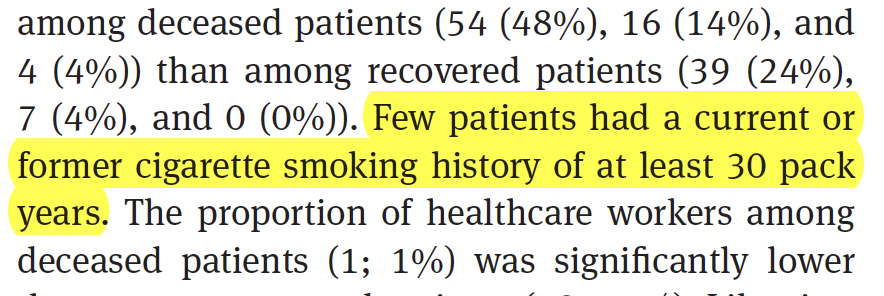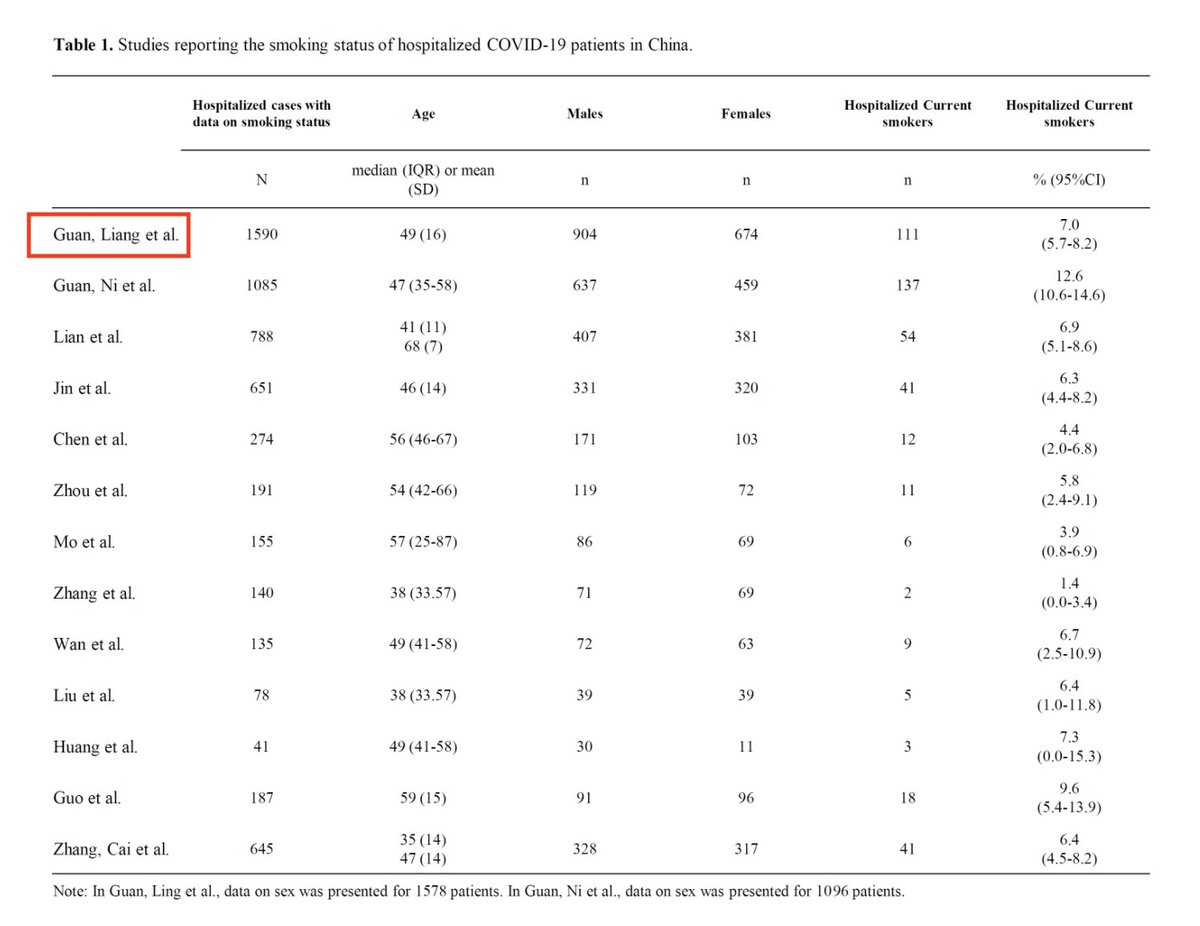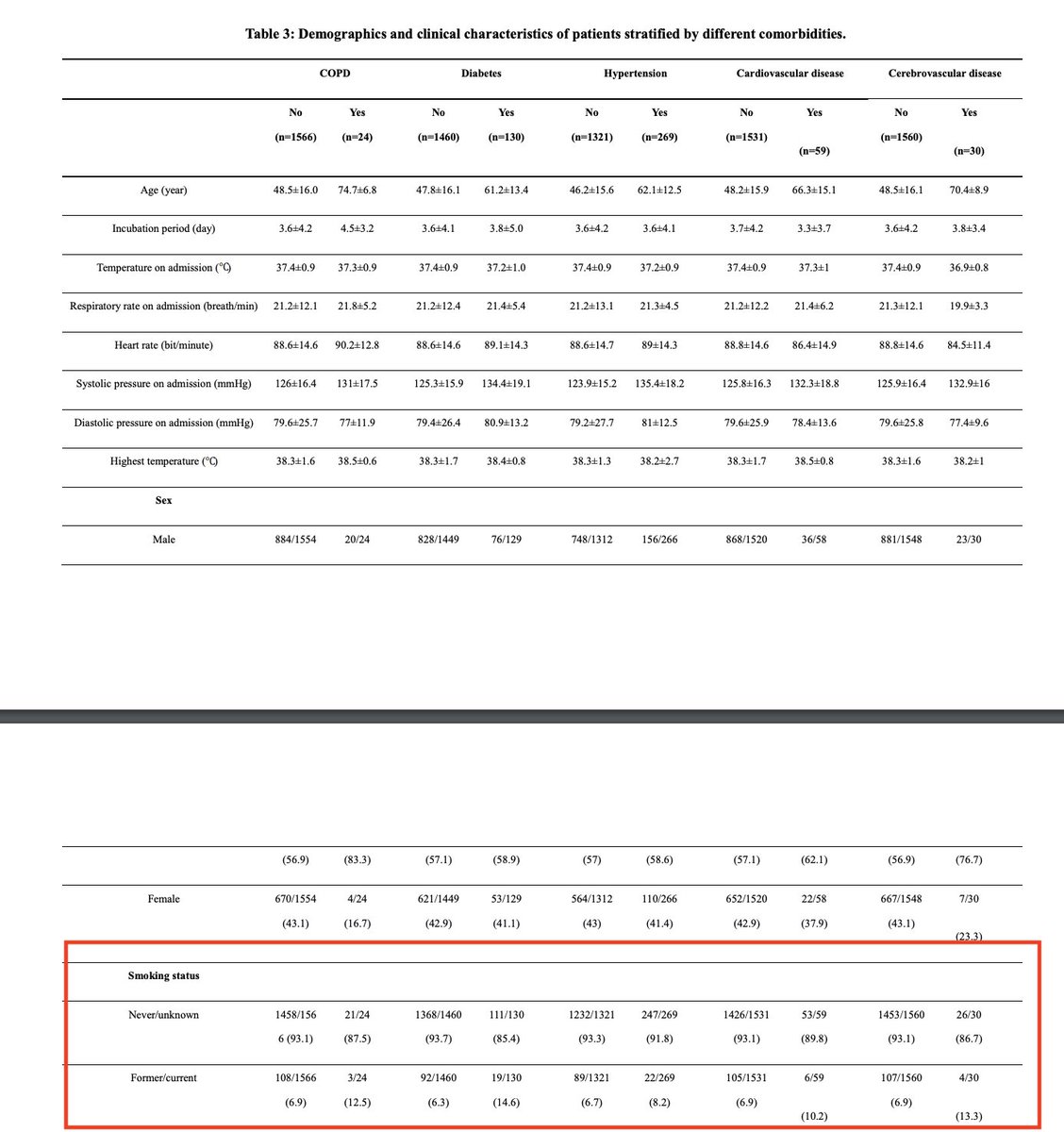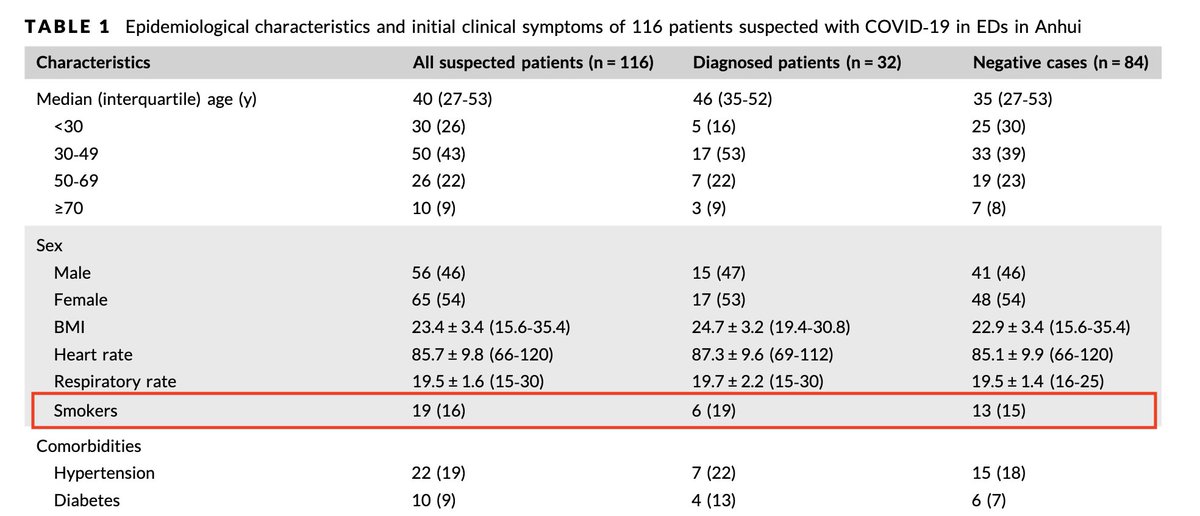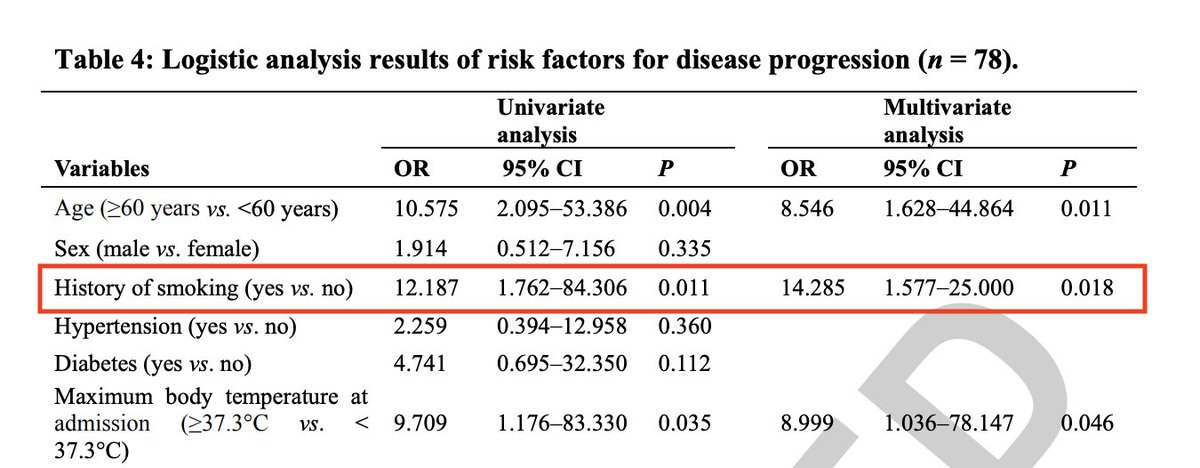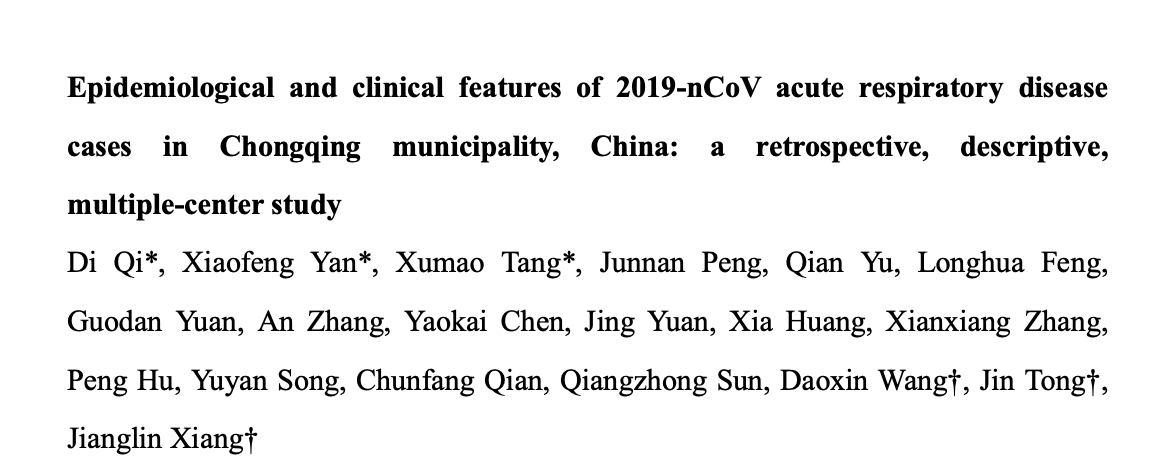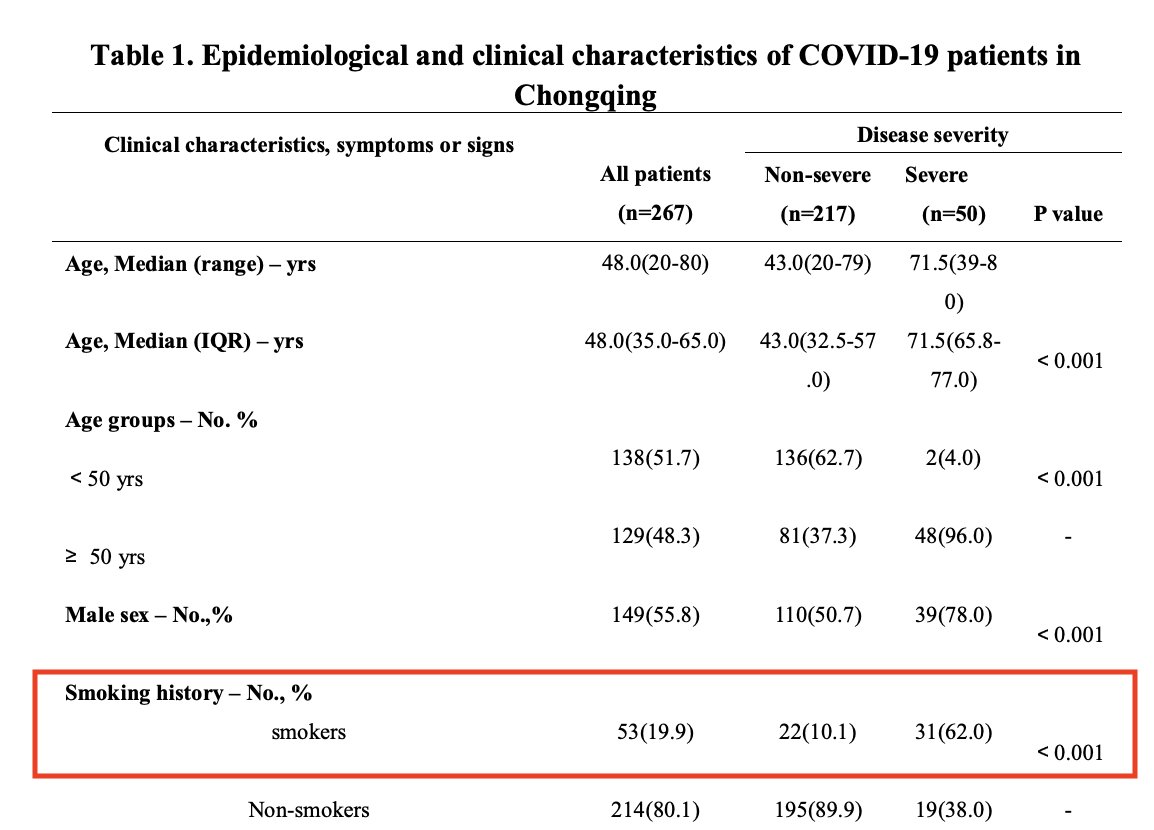This preprint has been going around the internet suggesting that smoking actually protects against coronavirus. I’m going to highlight some errors that went into this analysis and why I think you should be skeptical of its conclusion. https://www.qeios.com/read/article/561">https://www.qeios.com/read/arti...
This preprint contrasts two statistics: according to a survey conducted by the WHO, ~27% of people in China are smokers. If you look at coronavirus hospital admissions, fewer than 27% are smokers. Ergo, the paper argues, smoking may protect against COVID19.
This comparison assumes that the definition of smoker is constant. But, that assumption is wrong. One paper included in this analysis actually uses a cut-off of 30 pack-years (219,000 cigarettes!) to identify smokers. They aren’t recording all smokers, just heavy smokers.
This 30 pack-year threshold was not used in the WHO national survey that produced the 27% estimate, so it’s absolutely wrong to directly compare these two values as if they’re measuring the same thing.
In order to further investigate, I emailed the authors of some of the studies on COVID-19 in China. One doctor replied that their smoking frequency was so low because some patients were literally too sick to answer the question:
So, this highlights the first problem: it’s clear that in these studies, the definition of a smoker is neither consistent nor consistently applied. You can’t throw them all on a graph and call it a meta-analysis.
Now, let’s look at another paper cited in the preprint. Guan et al. report the frequency of various comorbidities in Chinese patients:
In this analysis, only 13% of COPD patients, 8% of hypertensives, and 10% of people with cardiovascular disease are smokers. If you assume a base rate of 27% smokers in China, then this analysis would falsely suggest that smoking protects against lung and heart disease!
This highlights a second major issue: it’s clear that the “27%” figure isn’t an accurate base rate for comparisons. Thinking otherwise implies that smoking cuts your risk for COPD in half.
The best approach would be to look at the frequency of smoking in a defined cohort of patients who are tested and found to be either positive or negative for COVID-19. That way you can apply a consistent definition of “smoker” and get an accurate base frequency.
So far, I can find one published example that directly compares COVID-positive and COVID-negative patients: https://onlinelibrary.wiley.com/doi/full/10.1002/jmv.25763.">https://onlinelibrary.wiley.com/doi/full/... In this study, 19% of COVID-positive patients were smokers and 15% of COVID-negative patients were smokers.
This data argues that smoking does not actually protect against coronavirus infections. Additionally, it shows that when hospitals are directly recording smoking statuses, they observe the prevalence of smoking to be below 27%.
Similarly, if you compare patients with critical and mild COVID-19, multiple studies indicate that smoking is strongly associated with severe infections. In one recent cohort, 62% of severe cases were smokers, compared to only 10% of mild cases.
So, in short, I think that this analysis is severely flawed. They’re comparing statistics that shouldn’t be compared. I don’t think that there’s any convincing evidence that smoking protects against coronavirus.
Tagging a few people who asked me about this data. @mattmight @TrevorSutcliffe @ChaunceyGardner @eperlste @cispt2 @michelleminton @mihotep
See also: https://twitter.com/JSheltzer/status/1250869089930825733">https://twitter.com/JSheltzer...

 Read on Twitter
Read on Twitter

